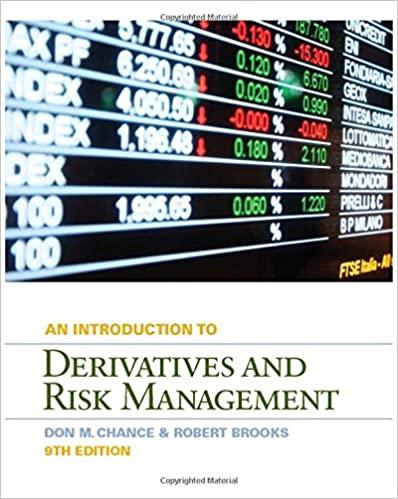Question
Mr. Johnson will be incorporating his sole proprietorship in the very near future (within the current taxable year). As such, he is planning to visit
Mr. Johnson will be incorporating his sole proprietorship in the very near future (within the current taxable year). As such, he is planning to visit Mrs. Smith, his CPA advisor of many years, for tax planning advice. He provided the following list of assets which he is considering transferring over to the new corporation:
| Cost | Adjusted Basis | FMV | |
| Cash | 30,000, | 30,000 | 30,000 |
| Equipment | 70,000 | 50,000 | 50,000 |
| Building | 150,000 | 120,000 | 150,000 |
Mr. Johnson lives in a high tax state resulting in a combined marginal federal and effective state tax rate for the current tax year of 40%. While he is planning to transfer all the assets to the corporation, he will be ultimately selling that building in 18 months. The CPA believes based on the information provided by Mr. Johnson that the corporation will be at a combined state and federal tax rate of 28% at the time of the building sale. Lastly, the FMV of the building will be slightly lower as a result of depreciation resulting in a FMV of $130,000 by the time he sells the building.
As one can imagine, Mr. Johnson and Mrs. Smith discussed various tax implications at their meeting. They conducted what-if analyses as to various alternative actions. The CPA has recently hired you as a tax trainee and wanted to acquaint you with typical client tax scenarios such as the one just discussed. She asked you to answer the following questions:
1) What code section(s) and regulations focus on these types of transactions? Do not forget the basis rules as well. Please be specific.
2) What are the criteria needed to enable the transfer of assets from the sole proprietorship to the Corporation to be tax-free? What would be the basis of those transferred assets? Please be specific in terms based on the facts above.
3) What would be the tax consequences if Mr. Johnson sells the building within 2 years of its TAX-FREE transfer to the corporation? Are there are any gains or losses and if so, how much?
4) Now, what would be the tax consequences if Mr. Johnson instead decides to sell only the building to the Corporation for $120,000 in promissory notes?
5) What are some of the tax and non-tax consequences (positive or negative) of keeping the building outside of the corporation? Please explain your answers.
Dont assume extra information than whats given. Example building its mortgage free because no mortage its mentioned.
Step by Step Solution
There are 3 Steps involved in it
Step: 1

Get Instant Access to Expert-Tailored Solutions
See step-by-step solutions with expert insights and AI powered tools for academic success
Step: 2

Step: 3

Ace Your Homework with AI
Get the answers you need in no time with our AI-driven, step-by-step assistance
Get Started


